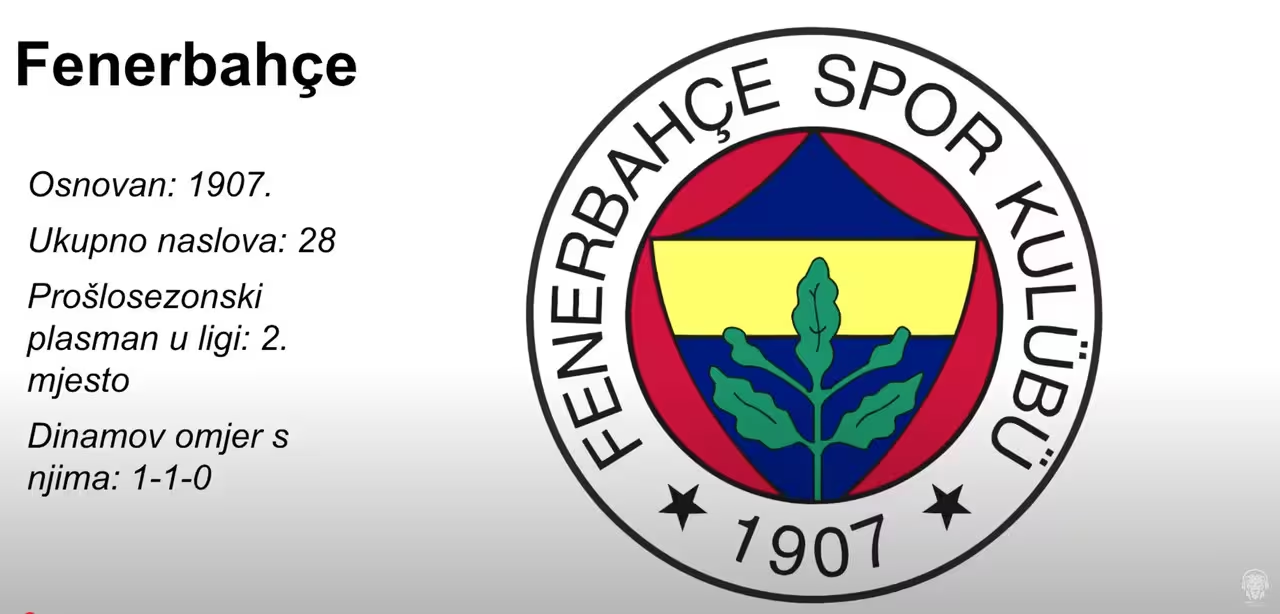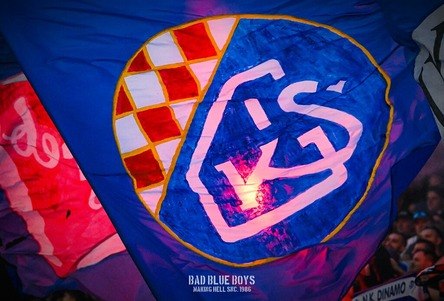
-
1. HŠK Građanski Zagreb
Napokon! Drago mi je da je rad napokon objavljen. Ali ovo nije kraj. Idemo dalje. :smile: -
Dinamo Zagreb; B ekipa, klub partner ili filijalaDa se mene pita klub nam se nebi zvao GNK Dinamo, nego 1. HGŠK Dinamo. To je najispravnije. Ali tko sam ja…
Marketinški gledano, drugu bi ekipu nazvati “Gradjanski” bio odličan potez. Dosta je skrivanja. Klub treba napokon krenuti sam pisati svoju povijest. Samo me zanima je li to prijedlog nekoga s ovog foruma ili postoje indicije da se u klubu o tome razmišlja? -
Dinamo Zagreb; B ekipa, klub partner ili filijala
Građanski nikada nije formalno pravno ugašen. Raspuštena mu je uprava kao i ostalim klubovima. Raspuštanje uprave nije gašenje kluba.
A prema riječima M. Mihovilovića, osobe koja 1945. godine od strane partije dobila zadatak “urediti” zagrebački sport, Dinamo je nasljednik Građanskog jednako kao što je nasljednik Croatie. Svi su tada znali da Dinamo nastavlja pravni kontinuitet Gradjanskog. Samo se o tome šutjelo. To nisam rekao ja. To je rekao čovjek koji je tada bio capo di tutti capi za to pitanje. -
Dinamova revija - klupski mjesečnik
Je. Miro Tomašević je isporučio još jedan dobar tekst o starom Građanskom.
Dosta toga sam znao, ali ima i dosta toga novog kaj sam saznao iz tog teksta. Al vjeruj mi, ima još toga kaj se može napisat. Općenito su te turneje Građanskog pune štikleca. Nadajmo se da bu još ovakvih tekstova u reviji. Lajkam. -
Dinamo - simboli kluba (grb...)
Jel možeš ovdje priložit kaj si točno slao? Čisto da i ostali znaju o čemu je točno riječ. Mene iskreno zanima… -
ZonaDinamo podcast - općenito
Jako sam zadovoljan podcastom. Hrabro i odvažno dalje!
Evo i jedan moj skromni prijedlog…
Trebalo bi van sezone (zimska ili ljetna stanka) neke podcast specijale na temu povijesti Dinama! Povremeno…
A to naravno uključuje i Gradjanski!
Ima ljudi na forumu i van njega kaj bi imali kaj reći o tome. -
ZonaDinamo podcast - općenitoVelika greška u najavi Fenera.
Građanski je 16.03.1924. godine tukao Fenera 3:2 nasred Istanbula.
Vrđuka je briljirao na golu.

-
HNL - 5. kolo - Varaždin - Dinamo Zagreb - 30.08.2025. - 21h, Stadion VarteksKratki komentar utakmice.
Prvo poluvrijeme maestralno. Bilo je tu odličnih poteza s naše strane. Potpuno smo kontrolirali igru, slično kao u Rijeci. Kovačević je ponovno dobro pročitao igru protivnika i pripremio ekipu za prvih 45 minuta. I dojma sam da smo morali dati još jedan gol jer je bilo situacija u kojima smo morali bolje odreagirati.
Na kraju poluvremena sam prokomentirao da se strašno bojim nekog njihovog "krumpira" i gola iz ničega. To se i dogodilo. Frajer je doslovno puknuo loptu kroz dva igrača naša igrača koja su išla u blok (i to je pohvalno!) i zabio. Pa to da proba još 10 puta neće pogodit onak kak je pogodio. Baš je fantastično pogodio.
Nakon toga ponovno povedemo i, po svemu sudeći, ono je neko milimetarsko zaleđe. Tu smo nakon toga psihički pali. Varaždinci su igrali dosta grubo cijelu utakmicu, u nekim situacijama su sudačke odluke bile nadasve nevjerojatne (poput onog povlačenja Valinčića pred rubom 16 metara koje je bilo za žuti karton, a niti prekršaj nije suđen). I dojma sam da su nas tu izbacili iz ritma. A to si ekipa poput Dinama ne smije dopustiti, koliko god "neuigrana" bila.
Drugi gol koji smo dobili je čisti poklon. Ono je tek gol iz ničega i smatram da je tu Nevistić morao riješiti stvar. Nemam riječi...
Znači, ovu tekmu je po zlu prošlo skoro sve što je moglo. Nije baš sve jer smo realizirali jedanaesterac. Da smo i to promašili, to bi bio vrhunac. Najveći problem je što se mnogima od nas aktivirao PTSP od prošle sezone. Koliko smo ovakvih utakmica tada pogledali? Jako, jako puno...
Brine me iskreno malo izostanak reakcije trenera na taktičke promjene protivnika. Indikativno je da je protivnik, slično kao prošlu utakmicu, uspio neutralizirati našu igru u drugom dijelu. Međutim, dojma sam da bi tu trener i stožer morali imati neki plan B (pa i C!). Nogomet je dinamična igra i jasno je ko dan da nećemo jedan Varaždin ili jednu rijeku "šamarati" svih 90 minuta kao što smo to činili prvih 45 minuta. Posebice zato što su i VŽ i Rijeka vjerojatno ekipe ranga top 5 SHNL-a. Ali mora postojati neka reakcija s naše strane. Ja je nažalost nisam vidio, a ako je i postojala onda je bila relativno mlaka.
Sve u svemu, prije će biti da smo pobijedili sami sebe nego što nas je pobijedio protivnik. Nekako mi se čini da ova utakmica nije smjela biti ona na kojoj ćemo ostati bez dva boda. Isto tako, jasno je da ne možemo baš svaku dobiti. Ajmo po redu. Kolo po kolo. Čisto da podsjetim sve ovdje prisutne, ovaj vikend se igra tek peto kolo i mjesec je rujan 2025. godine. Imamo još puno trave za pogaziti do svibnja sljedeće godine. Ne budimo kao neki koji svoje naslove (ili poraze) slave (ili oplakuju) već u rujnu. Saberimo se. Utakmica po utakmicu... -
Dinamova revija - klupski mjesečnik
Vidio sam na Njuškalu da ima ekipa koja prodaje određene brojeve. Pa pogledaj tamo.
Ako te to ne zanima iz kolekcionarskih razloga, onda predlažem odlazak u NSK jer mislim da tamo imaš sve brojeve. Dozvoljeno je fotkanje, pa si ih možeš “digitalizirati”. -
DRES Dinama - nekada, sada i ubudućeObećajem top treći dres iduće sezone, meni osobno bolji od oba treća na Castoreu. — Fantom
Može jedan treći dres s daškom povijesti? Recimo da se dizajnom istakne nastavak tradicije Građanskog. :razz: -
DRES Dinama - nekada, sada i ubudućeJa se toplo nadam da netko u klubu ima u planu nekakav specijalni dres povodom rođendana kluba sljedeće godine, a čiji bi dizajn bio motiviran motivima Građanskog. Molim nadležne da ovo uzmu u obzir (ako ih ima ovdje)!
Inače, sviđa mi se ova treća garnitura. Jednostavno i lijepo. Bez preveć cincifaka. Jednostavnost i otmjenost. -
Upravljačka Tijela | Predsjednik | Uprava | IO | NO
Istina. Al to ti je tak u životu. Tek kad nekaj izgubiš shvatiš kaj si imao. Jebiga, čista psihologija.
Puna podrška igračima, klubu i Zvoni Bobanu. -
DRES Dinama - nekada, sada i ubudućeGledam ove dresove. I sve su mi bolji. Lajkam oba!
Idemo još jače sljedeće godine! -
DRES Dinama - nekada, sada i ubudućeGostujući odličan. Napokon mi oči neće krvarit od one kričave žute boje.
Prvi dres je ok. Ali ko da ga je dizajniro neki junior na ugovoru preko student servisa. Daj malo više truda sljedeće godine. Pa domaći dres mora otkidat na prvi pogled.

Gradjanski Dinamo

Start FollowingSend a Message